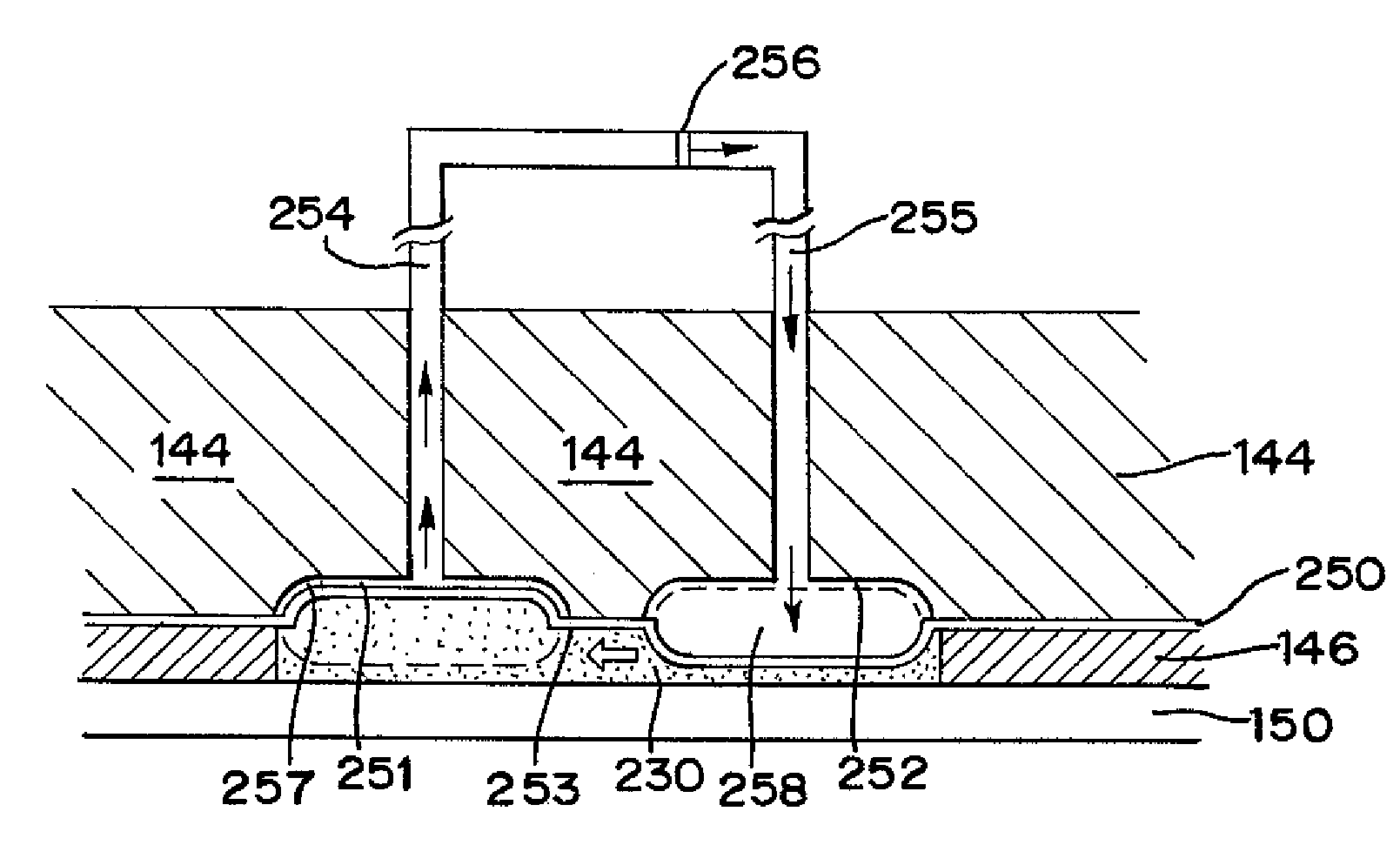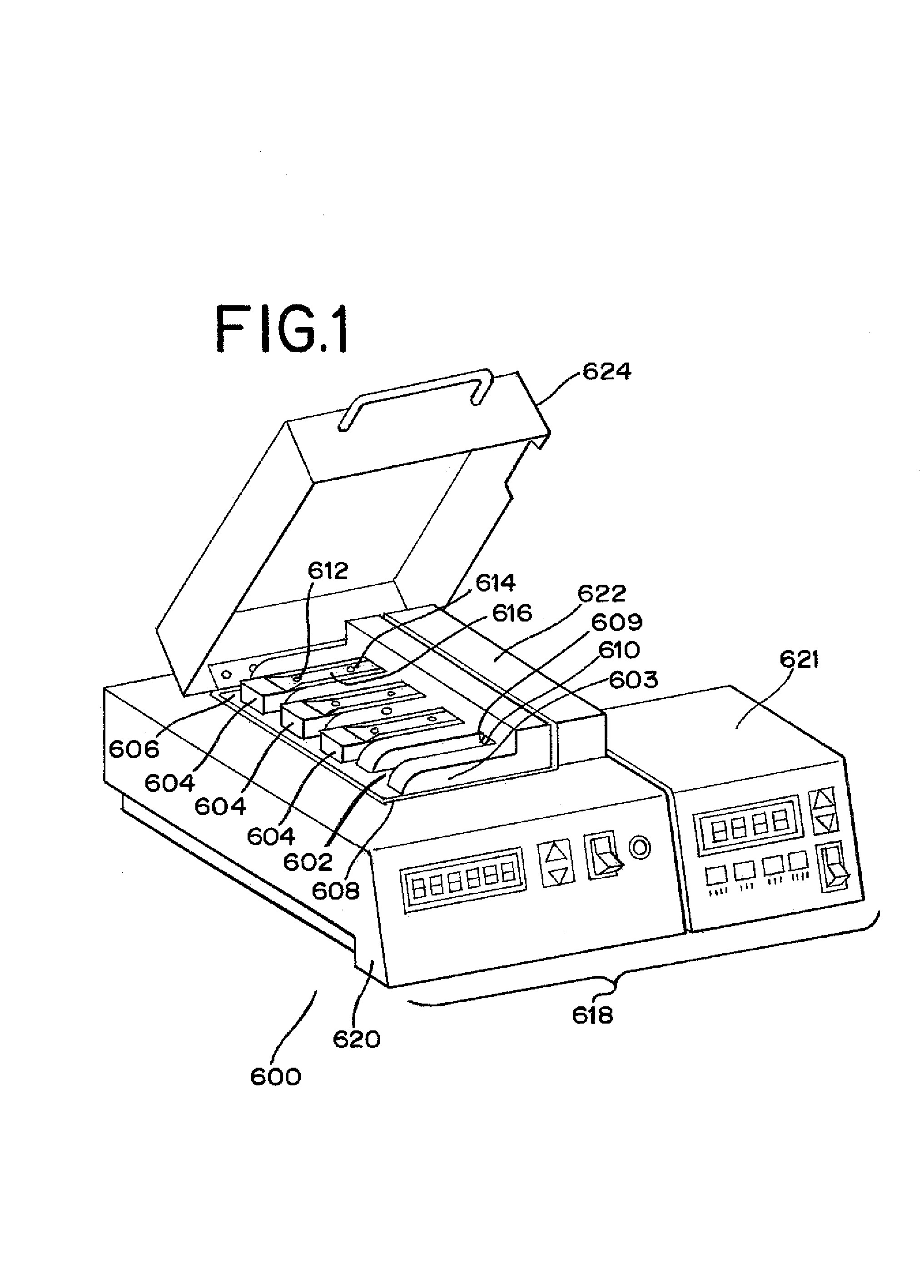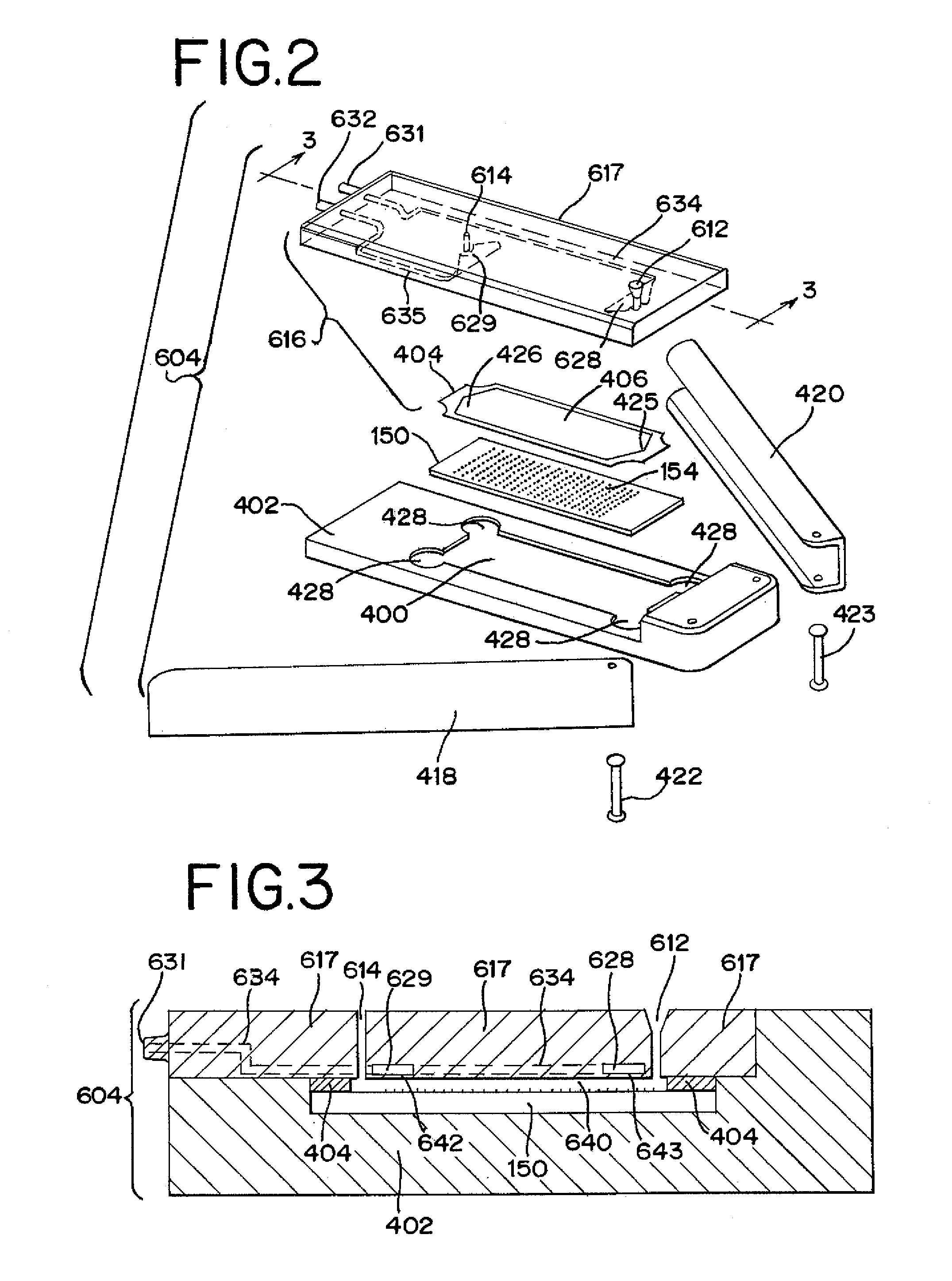Method and system for microfluidic interfacing to arrays
a microfluidic interfacing and array technology, applied in the direction of fluid speed measurement, flow mixer, flat carrier support, etc., can solve the problems of limited microarray processing time and care, no method has been completely satisfactory, so as to achieve better results, more controllable delivery of reactants, and more successful processing of microarrays
- Summary
- Abstract
- Description
- Claims
- Application Information
AI Technical Summary
Benefits of technology
Problems solved by technology
Method used
Image
Examples
Embodiment Construction
[0081]FIG. 1 depicts an example of a presently preferred embodiment of the invention. The invention includes an instrument 600, which includes multiple bays 602, each of which is adapted to receive a reaction device 604, which is made up of a microarray slide in combination with a microarray interface device. Bays 602 are located in base 603 on heat block 606, which fits into well 608 in instrument 600. Base 603 is formed as a part of heat block 606, or is formed separately and mounted on heat block 606. In either case, base 603 and bays 602 are in thermal communication with heat block 606. Reaction devices 604 are heated by heat block 606 during microarray processing. Each reaction device 604 mates with air connectors 609 and 610, visible in the empty bay 602. Air line connectors 609 and 610 are connected to a pressure source in instrument 600, which is used to drive mixing of fluid in reaction device 604. In the embodiment of the invention depicted in FIG. 1, sample, reagent, and ...
PUM
| Property | Measurement | Unit |
|---|---|---|
| height | aaaaa | aaaaa |
| height | aaaaa | aaaaa |
| height | aaaaa | aaaaa |
Abstract
Description
Claims
Application Information
 Login to View More
Login to View More - R&D
- Intellectual Property
- Life Sciences
- Materials
- Tech Scout
- Unparalleled Data Quality
- Higher Quality Content
- 60% Fewer Hallucinations
Browse by: Latest US Patents, China's latest patents, Technical Efficacy Thesaurus, Application Domain, Technology Topic, Popular Technical Reports.
© 2025 PatSnap. All rights reserved.Legal|Privacy policy|Modern Slavery Act Transparency Statement|Sitemap|About US| Contact US: help@patsnap.com



